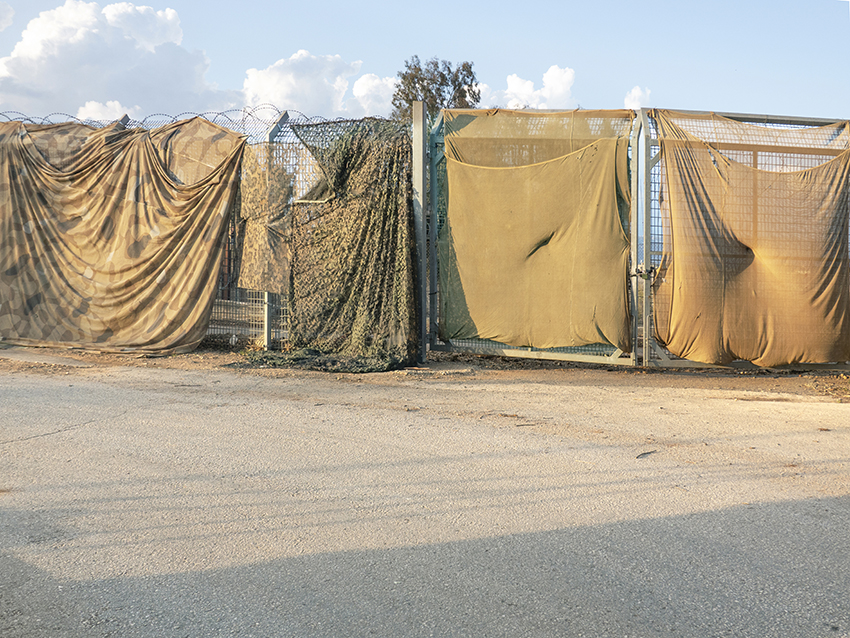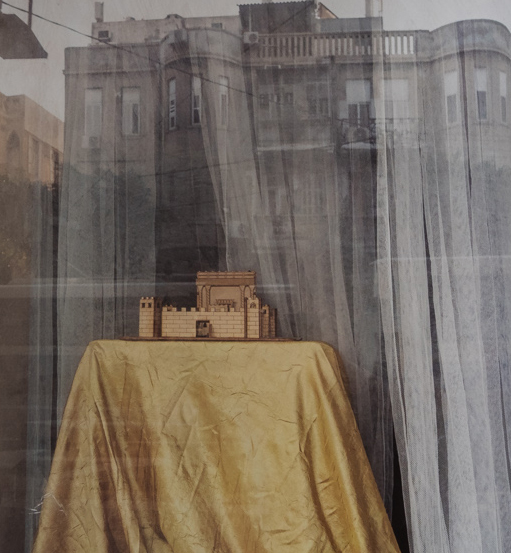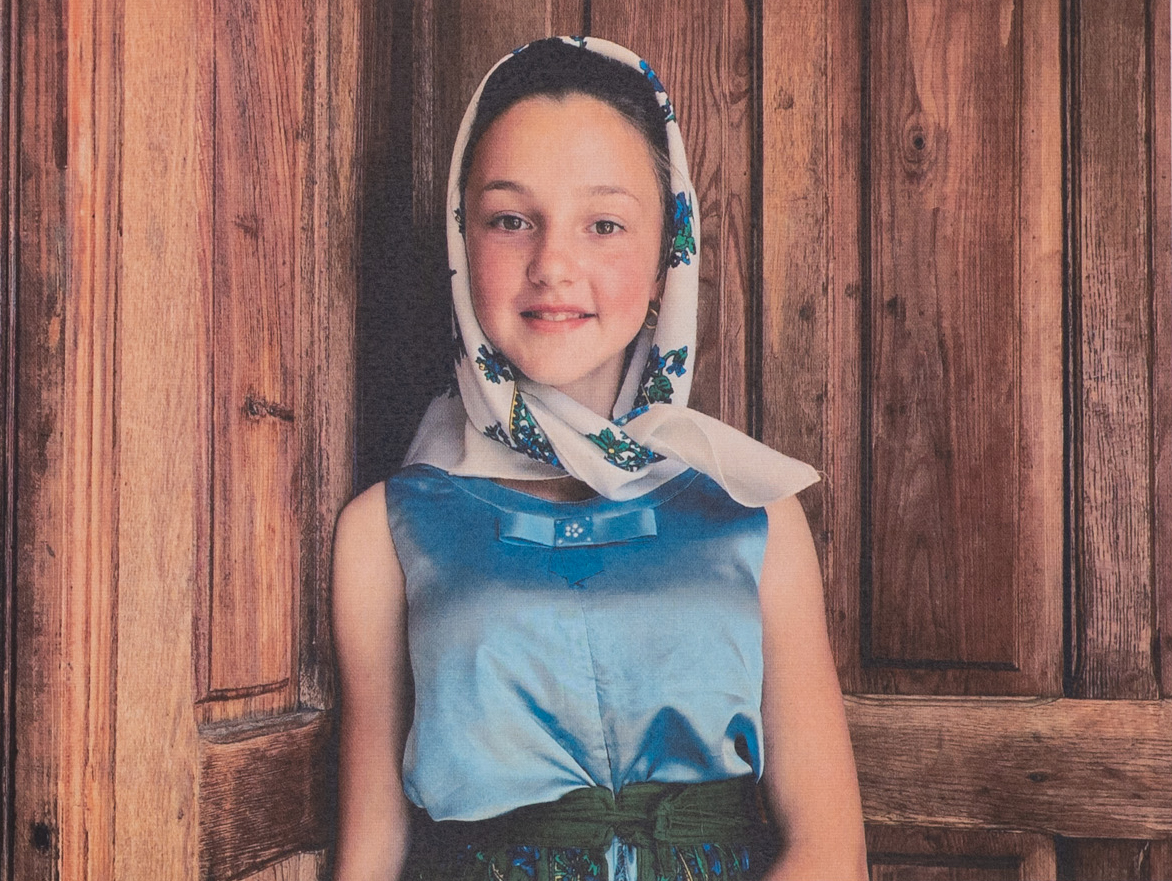You are a photographer, a teacher of photography, a curator, and a book editor for over 35 years. In 2020, you were the recipient of the Enrique Kavlin Lifetime Achievement Award for Photography from the Israel Museum. Half a Mega of Memories is your first artist’s book. How did your book come about and how do you see it in relation to your body of work?
It is as if this book was expelled from inside of me. I edited it quickly, in a process very different from my other work. It was after my husband Yossi died suddenly of a heart attack in the middle of the night. It’s hard to describe how awful it was. Alongside the shock, I felt completely absorbed in it. I had two sons, aged 11 and 19. I was very together on the outside, but inside—it was a combat zone. So I bought myself a little Sony camera—telephones didn’t come with cameras yet—and I put it in my back pocket. It was my savior. To function, to function, and to photograph everywhere: the beach on a Saturday walk, the wallpaper in a café—everything around me. It was complete mental automatism. I didn’t think I would do anything with the photographs, and most certainly not what I would do with them. I only knew I was reacting.
Did you also write or did that come later?
Yes, at that time I started writing these little poems. It was a strange and unusual phenomenon for me. I’m an articulate person, but I never wrote about myself. I would scribble lines before bed, while stopped at a traffic light, at the greengrocer. My unconscious burst out. A notebook felt to me too much of a commitment, so I wrote on scraps of paper, on the backs of parking garage tickets, on bills, and put them in a box. Precisely through words, which by nature are a means of fictional expression, emerged more informative-documentary texts, and the photographs expressed moods. As if the two languages were switched.
When did you realize it was a book?
I usually let things simmer for a long time; and here, suddenly, there was a book. It took about a year from start to finish, and I felt it was there, and that this time the materials were not gelling into an exhibition—they were a small book. I made a sketch and took it to Hakibbutz Hameuchad publishers. They looked at the photographs and the poems, and referred me to Leah Snir, the in-house poetry editor. I was expecting a polite rejection. She actually loved the book. She chose and edited the poems very delicately, adding a comma here, deleting an “and” there. She turned the poems from verses into sentences. It was important for me that word and image not be analogous. That each language be autonomous. Leah gave me the freedom to find the inner balance.
With whom did you work on that aspect of the book?
The graphic designer at Hakibbutz Hameuchad at the time was my sister-in-law Ruhama Shaulsky. She designed the book so beautifully: the cloth cover that gives the book warmth, the picture on the cover that required special printing and gluing by hand, the embossed title in white—and there was only one professional in Jerusalem who could do it. An almost handmade book. I wanted it to be like a notebook, an object that is pleasing to hold. The whole tone was minimalist, and also the images are almost empty; a strip of sand, a gray sky with a small sun at the edge. A reserved format. I purposely avoid the word intimate, because it’s used too freely, and I also have to avoid sentimentality—I need a kind of distance.
I cannot help but note that in the book there is no direct mention of Yossi’s death. That is, if you didn't know, then you can also “not know.”
Yes. Yossi is not mentioned, but death is. It’s there always, above my head like a cloud. Knowing death is in all my works, sometimes in a more present and visible way and sometimes maybe only I see it. But in the book it is very present, certainly in the texts, and in my opinion also in the images. The animals, the birds and the fish—die beautifully, elegantly, but they die. But yes, the viewer / reader, is asked to journey into the words and images. The very painful preoccupation with bereavement and loss is not hidden from view.
It reminds me of the photograph of Roland Barthes’ mother, which was the impetus for his Camera Lucida but that does not appear in the book itself. You deal with Yossi, but there is no direct written or photographic mention of him.
Yes, I really love Barthes. Camera Lucida is a “guide for the perplexed.” I taught it, and have reread it often. Look, I would like to do something different. To be able to take a photograph that delegates reality. When one thinks of the essence of photography according to Barthes, the idea becomes clear that the photograph reaches its peak when it fails, when it becomes transparent. When what we see is not ”there,” but only the reality that does not accept its authority. I did the opposite. I softened what Barthes called “the madness of photography.” In Half a Mega of Memories I wasn’t able to take a slice of reality unless it was a table corner, a wrinkle in a sheet. Things that have no apparent truth on the documentary level, but for me provided a truth of internal representation. One should be careful not to try to be too articulate about one’s own works; they always leave you in the dust.
In terms of photographic themes, the book very much resonates with your early and late series.
In real-time, I had the feeling that I was doing something that was completely outside of the areas I had worked in before. Today I can see the recurring motifs. In the exhibitions before Half a Mega of Memories, I hardly picked up a camera and said, “This is my photograph.” I have a problem, which I cannot fully articulate—it’s in the intellectual realm, not in principle—that has to do with the very act of appropriation. Not that I have a particular stance against appropriation, as I stated, I believe it is inherent to photography. But I wasn’t able to appropriate something for myself in a way that signifies some concrete reality. Already as a student, I had a hard time with it and found ways around it. In my first exhibitions, I used photography as a raw material, and I made works that had images from photographs that I printed and cut out. Access to documentary photography was only possible for me when I used materials from my family albums, a photo that was made for the purposes of memory and also deceives it. The trilogy of exhibitions that examined the family and national myths that emerged from the photograph albums started after I began editing them for a book about my father, called The Period Took Us—A Portrait of Yochai Ben-Nun (published by the Ministry of Defense).
Do you feel differently about this today? For example, I’m thinking of the last series you started uploading on social media during the Corona period, in which the photography is treated. On the risk of sounding very simplistic, can this book be read as a kind of beauty created out of a balance between knowing death and love of life?
There is a lot of beauty in Half a Mega of Memories, and in fact in all my works, I use it as something that allows me to cope with life, with loss, with beauty itself—maybe a kind of repair. I cannot give up on it; it wraps what is hiding behind it. I hope people see beyond this façade. What gets me going is not a search for “balance” or a “combination” of elements that touch on death and life. The motivation was to get an answer, a confirmation of the existence of a formless inner experience. Even when I encounter a spectacular sight, the motivation doesn’t stem from a desire to present it, but rather to detach and dismantle it and give it a subjective dimension. In this sense, there is no difference in my reference to my early and later photographs. Even after many years as a photographer, I don’t stop searching the world for the illusions of facts, for the reflection and confirmation of the mind’s image. This is not an ideological perception in relation to photography, but almost the opposite. Sometimes I want to be a different kind of photographer.
That’s very interesting. What kind?
I have a story about this. After finishing my photography studies at Hadassah College, I went to study art at Hamidrasha in Ramat Hasharon. I studied much more than the curriculum required. I studied with almost every painting teacher. Among them, with Moshe Gershuni. He was an anti-teacher. I don’t think he believed that art could be taught. But he once said, “What makes an artist who they are is not their abilities but their limitations.” And this is a sentence that really struck me—the most important lesson of all. I really liked his paintings; it was the period of his “My Soldier” paintings. One day I told myself I wanted to “do Gershuni.” I bought duplex paper sheets, varnishes, glass paints. At the time, I was living in a small apartment that was also my studio. At the end of that day, I was smeared with varnish from head to toe, with some absolute scribble on the floor. It was a life lesson: I am who I am. I need cleanliness, restraint, and order for my work—for everything to be in its proper place, for nothing to get out of hand, and preferably for it to be in black and white. I am only able to move and let go within this safe pattern.
I completely understand what you’re saying. This leads me to ask about the role of the “daughter.” You started saying that you did three exhibitions of family photographs, and that you dealt quite a bit with the figure of your father, who was an Israeli hero and commander of the navy. Is this restraint you described related to a “role,” that is, to being the “daughter of”?
I don’t see a connection to restraint, but it can certainly be said that the daughter’s place vis-à-vis a hero father and also a mother whose life is tied up in the history of the country, dominated my works at a certain period. Mostly from the place of the collective heroic memory overshadowing the personal memory, and it’s clear that I lived this reality. It was present in every context that I was the “daughter of.” It bothered me, but it was justified to a degree in many instances. I did three exhibitions that dealt with my personal biography. Today, the biographical element in my work is assimilated into a more primal conception.
Can you tell about the process of working on the book The Period Took Us? By the way, the title is quite ambiguous.
It’s edited like an autobiographical diary, comprised of many photographs of my father throughout his life, and texts, almost all in the first person, in which he tells about his life from childhood to old age. I edited the photos from the family albums, and throughout I added photos that I had taken. My mother edited the texts with Dita Gerry. The graphic artist was the excellent, late Hava Mordechowitz, who knew to work wonderfully with the qualities of the photograph. I nursed the project all the way to the printer, where I fought for every page. I think this is a very special book; a picture of a person and a visually fascinating period, both in terms of its content and the language he uses, with such a unique choice of words.
And do you have a local “forefather” in the field of photography?
Most of my photography forefathers were foreign. I think this is true for many of the local photographers of my generation. We were mainly influenced by European and American photography. That’s why I think my family album was so significant for me as a source. The first photographers here were of course mostly men, and it only began to change in the '70s and '80s. When I studied photography, we finally saw many influential women in the field: Dalia Amotz, Deganit Berest, Ronit Shani, Judy Orgel Lester, and many more. They paved the way.
Did the book about your father “make” you into an editor? Do you see any connection between women and the editing profession?
Whoever teaches photography, edits all the time. Editing is one of the most significant tools for understanding the emerging work. I don’t see it as a gender issue. I don’t tend to see life through the lens of gender, this is not my experience from 35 years of teaching. There are of course students whose gender identity has preoccupied them and been significant for the content of their work, but it is difficult for me to articulate my experience as a creator and teacher in gender terms. I’m color blind about this, perhaps also because in the photography department at Hadassah College, while the director was a man, it was an empire of women; and this was significant in the dynamics of the teaching staff, teachers and students. I never felt at a disadvantage as a woman or as a photographer, but when I look at the circumstances of my life, of course I paid a heavy professional price for the roles I took on and that filled my life as a mother.
I would just like to note the etymological connection between the Hebrew words arakhim, that is values, and arikha, editing. This is something my mother, who for many years worked in film editing, remarked about to me.
It’s important to understand what comes first and why. Often the work process begins with a very general definition. The act of editing in photography often precedes the verbal articulation of the work. In many cases, something pre-verbal happens. Only in trying to understand what emerges from the editing, or from different editing options, is it easier to understand the values of the work. In Half a Mega of Memories the text was part of the work, but usually the words are just a tool whose limitations we need to be aware of. Sometimes we get stuck on words, but the work has long since left the station. In my opinion, it’s wrong to define the limits of the work in advance.
The title of a book is like a secret. Will you let us in on it?
Half a Mega of Memories is a line from one of the poems. It connects the camera’s mechanical memory card that captures memories with the unquantifiable—the memory itself. The connection felt right to me. Turning chaotic material into an image, into a sentence, an object.
What book should we add next to our library?
Shuka Glotman's. He has published a number of very interesting books, but I am thinking mainly of An Israeli’s Album, which to me is a rare and important multidimensional work, which he can describe better than I can.
Where can we get your book?
Sifriat Poalim Publishing House.
Noa Ben-Nun Melamed (b. Haifa, 1954) lives and works in Tel Aviv-Yafo. She is a graduate of the Department of Photography at Hadassah College in Jerusalem and arts education at Hamidrasha, Beit Berl College. She hold a master’s degree in group art-therapy from Lesley University. Ben-Nun Melamed has been involved in photography for over three decades, as a photographer, teacher, curator, and editor. Her works deal with memory, death, transience and myth—sometimes from biographical contexts that examine the encounter between private and national myth, often in relation to the sea. In 2020, she won the Enrique Kavlin Prize Lifetime Achievement Award for Photography from the Israel Museum.




"I usually let things simmer for a long time; and here, suddenly it was a book. It took about a year from start to finish, and I felt it was there, and that this time the materials were not gelling into an exhibition—they were a small book."




"I studied with almost every painting teacher. Among them, with Moshe Gershuni. He was an anti-teacher. I don’t think he believed that art could be taught. But he once said, “What makes an artist who they are is not their abilities but their limitations.” And this is a sentence that really struck me—the most important lesson of all."









